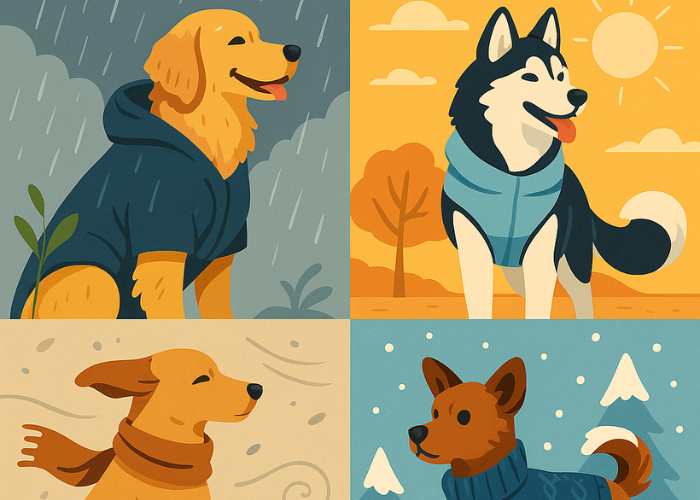Traveling with your dog can be an incredible experience, but it requires planning to ensure everything goes smoothly. From documentation to your pet’s comfort during the journey, every detail matters. In this guide, you’ll find essential information to make your four-legged friend’s trip safe and stress-free.
Planning and Necessary Documentation
Before hitting the road or boarding a plane, make sure your dog has all the necessary documents.
- Updated vaccination records: Some trips, especially international ones, require proof of rabies and other vaccinations.
- Health certificate: A veterinarian must evaluate your pet and issue a health certificate, which may be required by airlines and for international travel.
- Microchip identification: In some regions, microchips are mandatory and can help locate your dog if they get lost.
Choosing the Right Mode of Transportation
Traveling by Car
Car travel is one of the most comfortable ways to transport your dog, as it allows for breaks and a controlled environment.
- Use a seatbelt harness or carrier: Keeping your dog secured prevents injuries in case of sudden stops.
- Frequent breaks: Plan stops every two hours to let your dog drink water, relieve themselves, and stretch.
- Proper ventilation: Never leave your pet alone in the car, especially on hot days, as temperatures can rise quickly.
Traveling by Plane
If you’re flying with your dog, it’s crucial to understand airline regulations in advance.
- Cabin or cargo? Some airlines allow small pets in the cabin, while others require larger dogs to be transported in the cargo hold.
- Approved pet carrier: Ensure the carrier meets airline requirements and is spacious enough for your dog to move comfortably.
- Familiarization with the carrier: Before the trip, train your dog to get used to the carrier to reduce stress.
What to Pack for Your Dog
Preparing a travel bag for your dog can help avoid unexpected issues. Essential items include:
- Food and treats: Bring enough for the entire trip and maintain a regular feeding schedule.
- Collapsible food and water bowls: Opt for portable, easy-to-clean models.
- Medications and first aid kit: If your pet takes any medication, bring the necessary doses and consult a vet beforehand.
- ID tags and collar: Include your phone number and contact details.
- Comfort items: Blankets, toys, and a dog bed can reduce stress in new environments.
Tips to Keep Your Dog Comfortable During Travel
- Stick to a routine: Feed and walk your pet at their usual times.
- Avoid feeding right before the trip: This helps prevent motion sickness.
- Use pheromones or natural calming aids: If your dog gets anxious, consult a vet about gentle calming options.
Conclusion
Traveling with your dog can be a fantastic experience if planned correctly. Ensuring all necessary documentation, choosing the best travel method, and packing a bag with essentials will provide a safe and comfortable journey for your furry companion.
With proper care and attention, your dog can fully enjoy every adventure by your side!
Frequently Asked Questions About Traveling with Dogs
1. Do I need any documents to travel with my dog? Yes, an updated vaccination record and a health certificate issued by a vet are required for most trips, especially air or international travel.
2. How can I prevent my dog from getting anxious during travel? Get your dog accustomed to the travel environment beforehand, bring familiar items like blankets and toys, and consider consulting a vet for natural calming aids.
3. Can I bring my dog in the airplane cabin? It depends on the airline and your dog’s size. Small dogs are usually allowed in the cabin, while larger dogs may need to travel in the cargo hold.
4. How can I ensure my dog doesn’t get sick while traveling? Avoid feeding right before the trip, take regular breaks on long car journeys, and ensure proper ventilation in the car or carrier.
5. What should I do if my dog gets lost during the trip? Keep your dog on a leash with an ID tag containing your contact information. A microchip can also help locate them quickly if they get lost.



